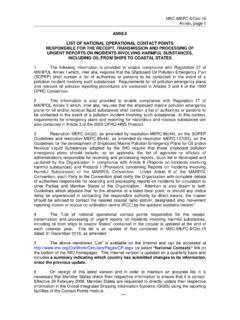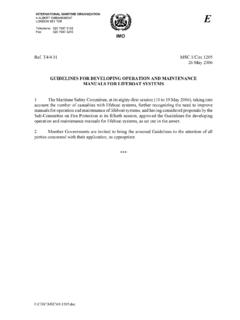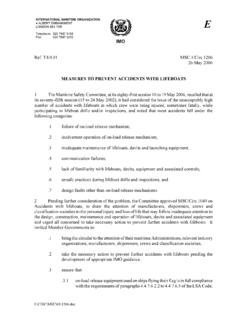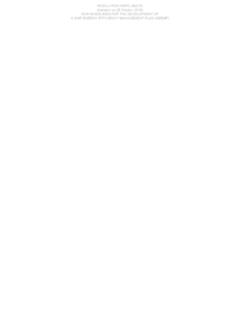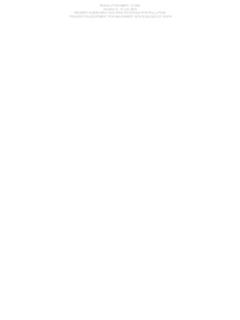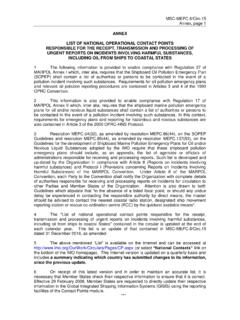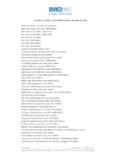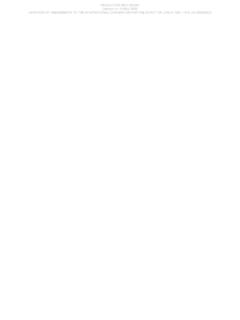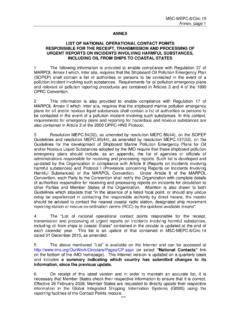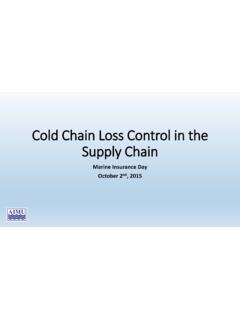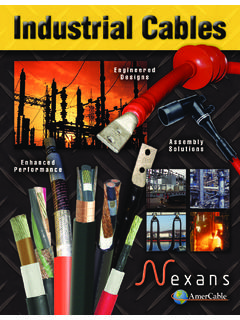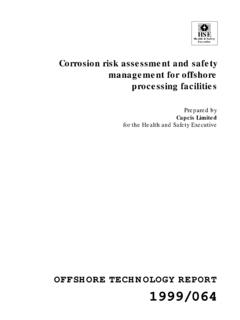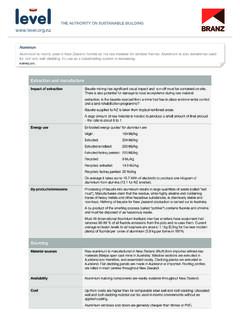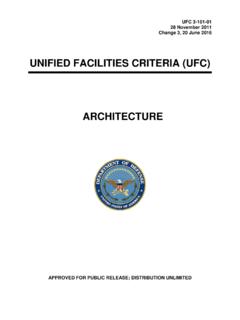Transcription of GUIDELINES FOR THE REDUCTION OF UNDERWATER NOISE …
1 I:\CIRC\MEPC\01\ E 4 ALBERT EMBANKMENT LONDON SE1 7SR Telephone: +44 (0)20 7735 7611 Fax: +44 (0)20 7587 3210 7 April 2014 GUIDELINES FOR THE REDUCTION OF UNDERWATER NOISE FROM COMMERCIAL SHIPPING TO ADDRESS ADVERSE IMPACTS ON MARINE LIFE 1 The Marine Environment Protection Committee, at its sixty-sixth session (31 March to 4 April 2014), with a view to providing guidance on the REDUCTION of UNDERWATER NOISE from commercial shipping, and following a recommendation made by the Sub-Committee on Ship Design and Equipment, at its fifty-seventh session, approved the annexed GUIDELINES for the REDUCTION of UNDERWATER NOISE from commercial shipping to address adverse impacts on marine life. 2 Member Governments are invited to use the annexed GUIDELINES from 7 April 2014 and to bring them to the attention of all parties concerned.
2 ** Annex, page 1 I:\CIRC\MEPC\01\ ANNEX GUIDELINES FOR THE REDUCTION OF UNDERWATER NOISE FROM COMMERCIAL SHIPPING TO ADDRESS ADVERSE IMPACTS ON MARINE LIFE 1 Preamble Concern has been raised that a significant portion of the UNDERWATER NOISE generated by human activity may be related to commercial shipping. The international community recognizes that UNDERWATER -radiated NOISE from commercial ships may have both short and long-term negative consequences on marine life, especially marine mammals. It is important to recognize that both the technical and cost-effectiveness of measures considered, either individually or in combination, will be strongly dependent on the design, operational parameters, and mandatory requirements relevant for a particular ship.
3 A successful strategy to reduce radiated NOISE should consider interactions and contributions from measures provided to achieve other objectives such as REDUCTION of onboard NOISE and improvements in energy efficiency. When efforts have been made to mitigate UNDERWATER NOISE , as far as reasonable and practical, evaluation should be undertaken to determine the success or otherwise of ship NOISE REDUCTION efforts and to guide and enhance future activities at NOISE REDUCTION . Such evaluation can include forms of radiated- NOISE measurements, simulations or other ways of data gathering. 2 Application These GUIDELINES can be applied to any commercial ship. These GUIDELINES do not address the introduction of NOISE from naval and war ships and the deliberate introduction of NOISE for other purposes such as sonar or seismic activities.
4 3 Purpose These non-mandatory GUIDELINES are intended to provide general advice about REDUCTION of UNDERWATER NOISE to designers, shipbuilders and ship operators. They are not intended to form the basis of a mandatory document. Given the complexities associated with ship design and construction, the GUIDELINES focus on primary sources of UNDERWATER NOISE . These are associated with propellers, hull form, onboard machinery, and operational aspects. Much, if not most, of the UNDERWATER NOISE is caused by propeller cavitation, but onboard machinery and operational modification issues are also relevant. The optimal UNDERWATER NOISE mitigation strategy for any ship should at least consider all relevant NOISE sources. These GUIDELINES consider common technologies and measures that may be relevant for most sectors of the commercial shipping industry.
5 Designers, shipbuilders, and ship operators are encouraged to also consider technologies and operational measures not included in these GUIDELINES , which may be more appropriate for specific applications. Annex, page 2 I:\CIRC\MEPC\01\ 4 Definitions Cavitation inception speed is the lowest ship speed at which cavitation occurs. Propeller cavitation is the formation and implosion of water vapour cavities caused by the decrease and increase in pressure as water moves across a propeller blade. Cavitation causes broadband NOISE and discrete peaks at harmonics of the blade passage frequency in the UNDERWATER NOISE spectrum. The broadband NOISE is caused by growth and collapse of a vast amount of individual cavitation bubbles in water. The discrete NOISE peaks are caused by the volume fluctuations of the sheet and tip vortex cavities.
6 UNDERWATER NOISE , or the UNDERWATER -radiated NOISE level, for the purposes of these GUIDELINES refers to NOISE from commercial ships*. 5 Predicting UNDERWATER NOISE levels UNDERWATER NOISE computational models may be useful for both new and existing ships in understanding what reductions might be achievable for certain changes in design or operational behaviour. Such models may be used to analyse the NOISE sources on the ship, the NOISE transmission paths through the ship and estimate the total predicted NOISE levels. This analysis can help shipowners, shipbuilders and designers, to identify NOISE control measures that could be considered for the specific application, taking into account expected operational conditions. Such measures may include amongst others: vibration isolation mounts ( resilient mounts) for machinery and other equipment, dynamic balancing, structural damping, acoustical absorption and insulation, hull appendages and propeller design for NOISE REDUCTION .
7 Types of computational models that may assist in reducing UNDERWATER NOISE include: .1 Computational Fluid Dynamics (CFD) can be used to predict and visualize flow characteristics around the hull and appendages, generating the wake field in which the propeller operates; .2 Propeller analysis methods such as lifting surface methods or CFD can be used for predicting cavitation; .3 Statistical Energy Analysis (SEA) can be used to estimate high-frequency transmitted NOISE and vibration levels from machinery; and .4 Finite Element Analysis (FEA) and Boundary Element Method (BEM) may contribute to estimate low-frequency NOISE and vibration levels from the structure of the ship excited by the fluctuating pressure of propeller and machinery excitation.
8 The value of a modelling exercise is enhanced if its predictive capabilities are assessed in case studies under various operational conditions. * UNDERWATER -radiated NOISE level is reported in sound pressure levels in decibels and expressed as 10 times the logarithm of the square of the ratio of the rms sound pressure to a reference pressure of 1 micro Pascal. When it is a ship source level, the sound pressure level is adjusted to a level at 1 m from the source. Annex, page 3 I:\CIRC\MEPC\01\ 6 Standards and references UNDERWATER NOISE should be measured to an objective standard for any meaningful improvements..1 The International Organization for Standardization (ISO) has developed the (ISO/PAS) 17208-1 Acoustics Quantities and procedures for description and measurement of UNDERWATER sound from ships Part 1: General requirements for measurements in deep water.
9 This measurement standard is for deep water which implies that the water depth should be larger than 150 m or times overall ship length (engineering method), whichever is greater. This is a temporary publicly available standard. This standard is based on the American National Standards Institute and the Acoustical Society of America (ANSI/ASA) "Quantities and Procedures for Description and Measurement of UNDERWATER Sound from Ships, Part 1: General Requirements"..2 ISO is also developing ISO/DIS 16554 Ship and marine technology Measurement and reporting of UNDERWATER sound radiated from merchant ships deep-water measurement, which is expected to be published in 2013. The standard would provide shipyards, shipowners and ship surveyors with a well-established measurement method for UNDERWATER sound radiated from merchant ships for use at the final delivery stage of ships.
10 Several research ships have been designed using the NOISE specification proposed by the International Council for the Exploration of the Sea (ICES) Cooperative Research Report (CRR 209). It should be noted that the ICES CRR 209 NOISE specification was designed for fishery research ships so that marine life would not be startled during biomass surveys; it was not intended to be used as a commercial ship design standard to prevent potential harm of marine life. However, certain design arrangements used to meet ICES CRR 209 may still be useful for new commercial ships to reduce UNDERWATER NOISE . Other UNDERWATER NOISE rating criteria are available and may prove useful as guidance. 7 Design considerations The largest opportunities for REDUCTION of UNDERWATER NOISE will be during the initial design of the ship.
